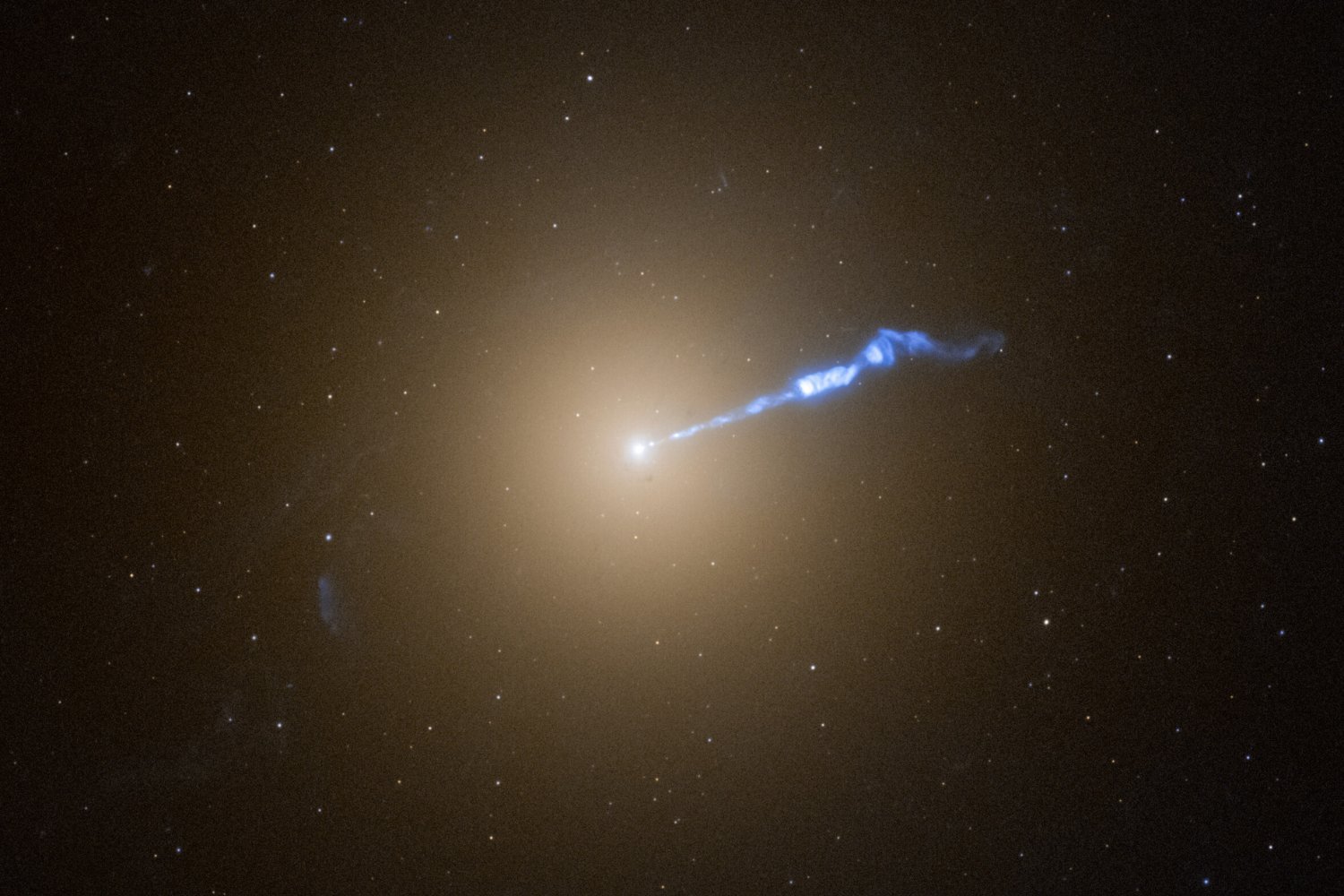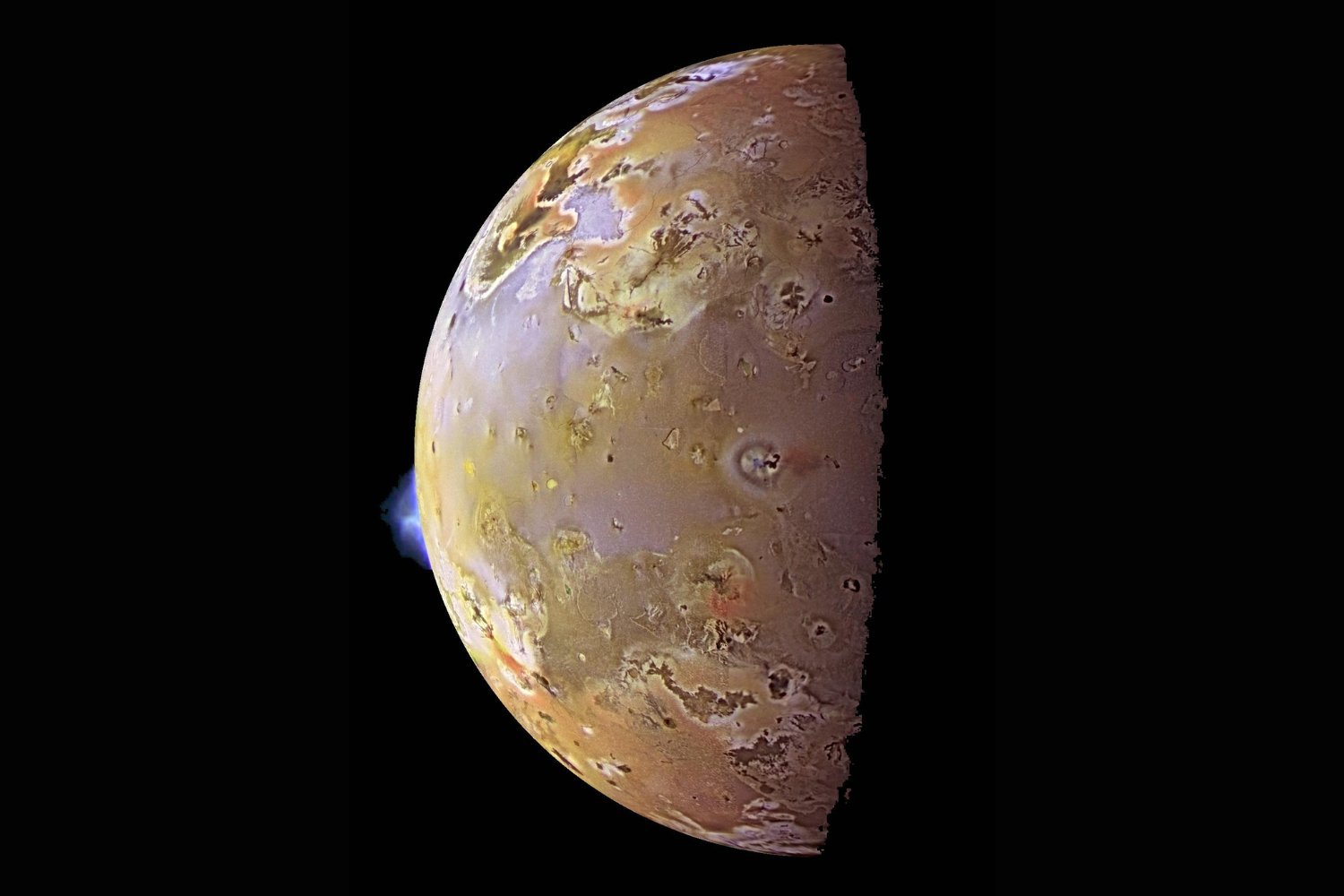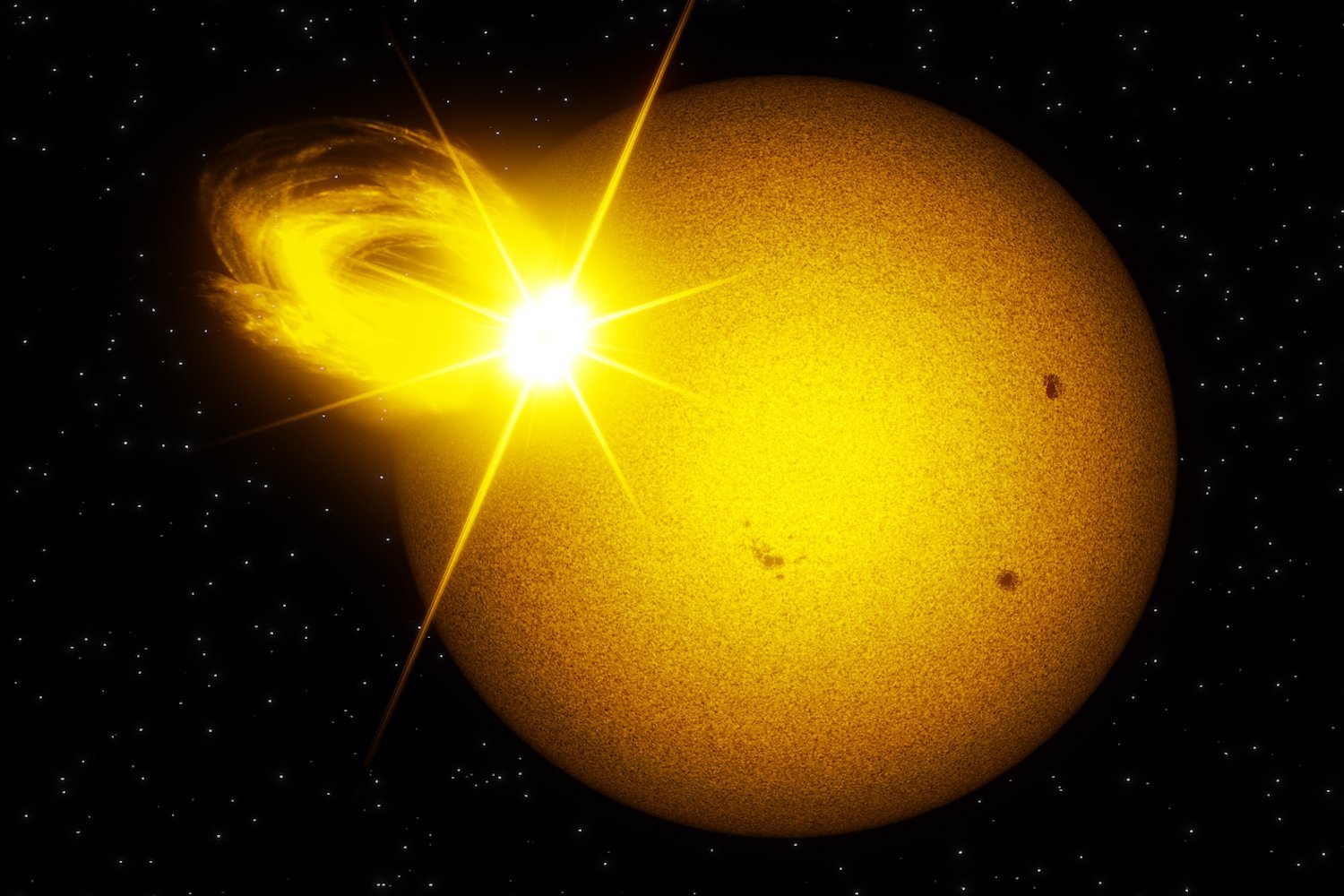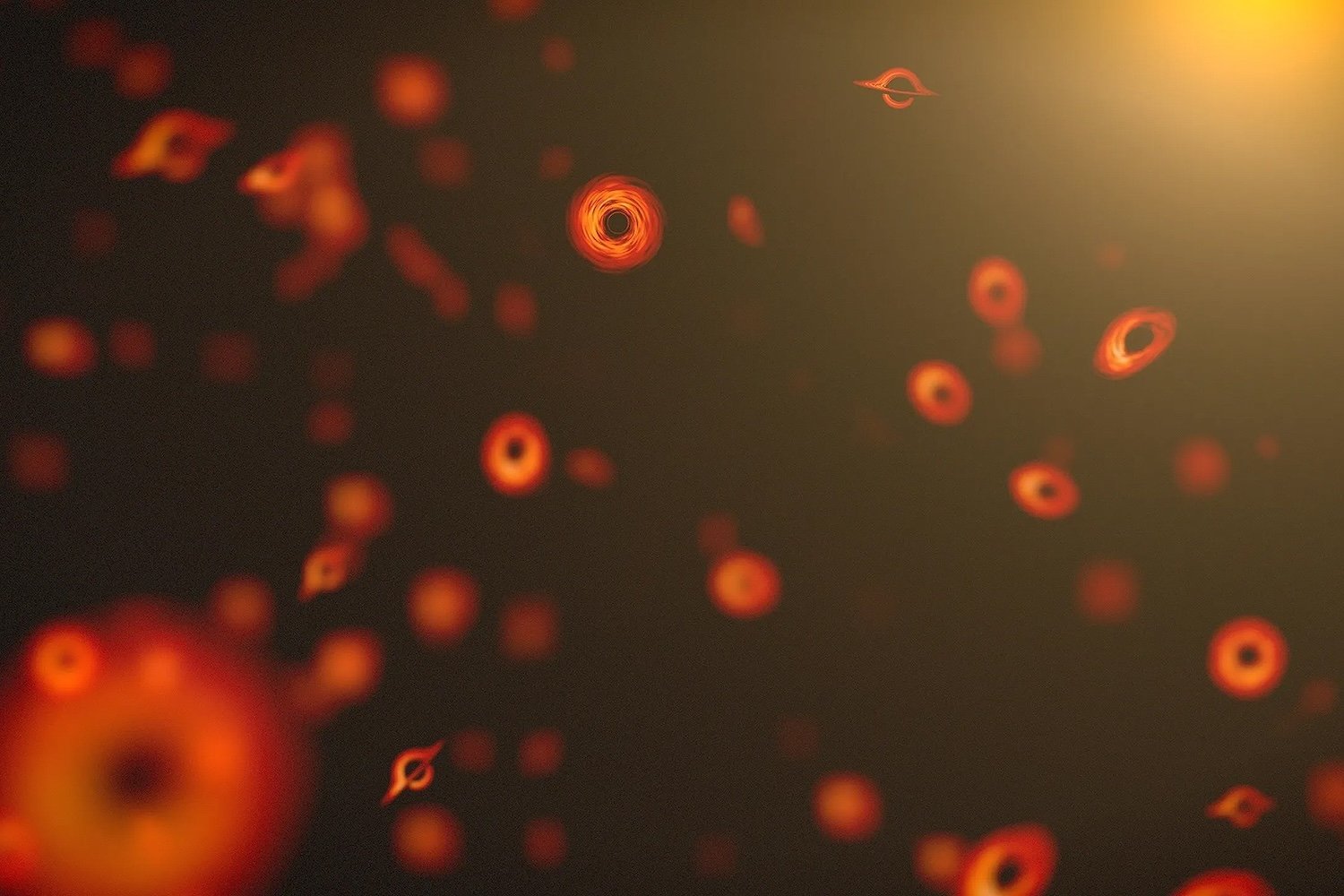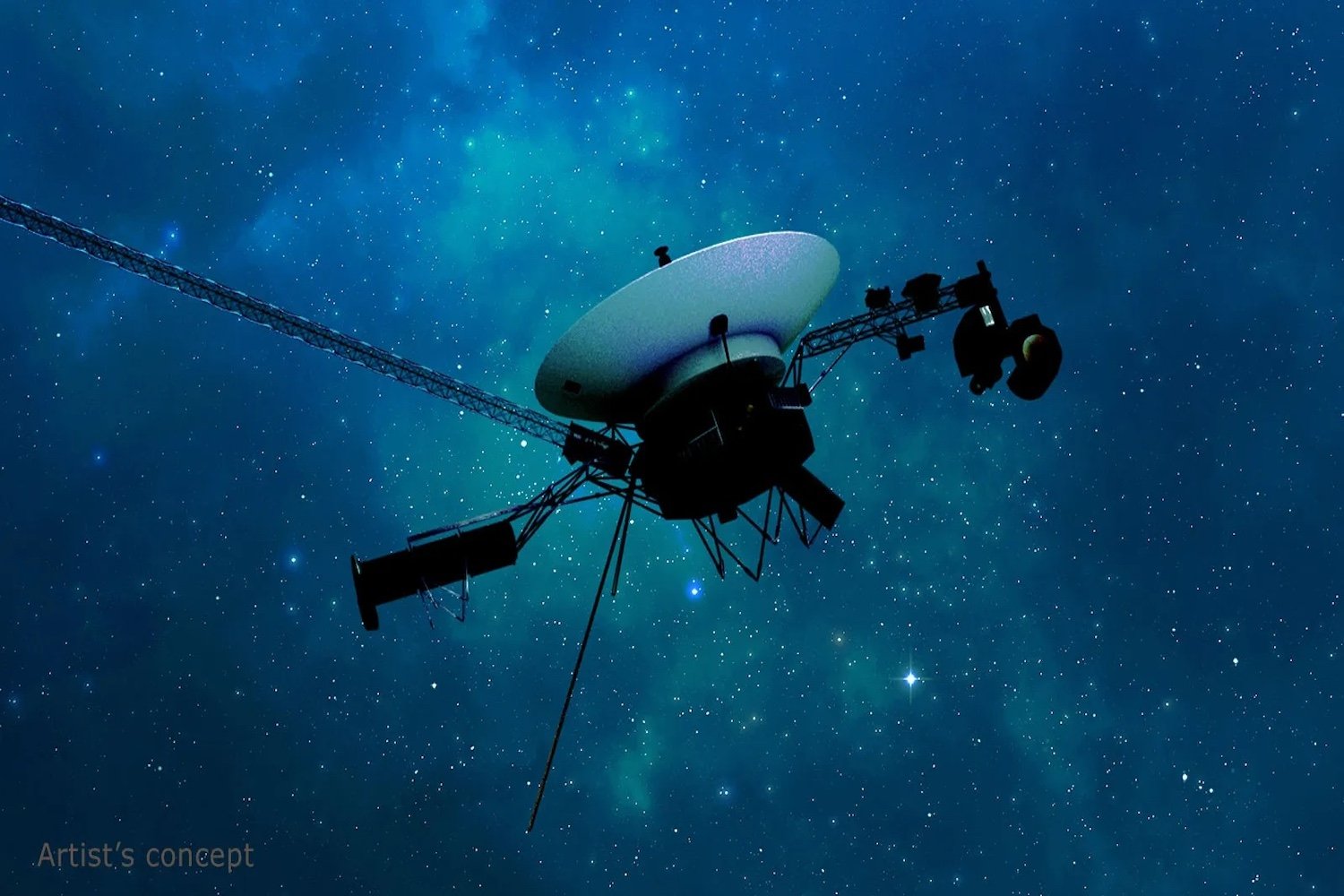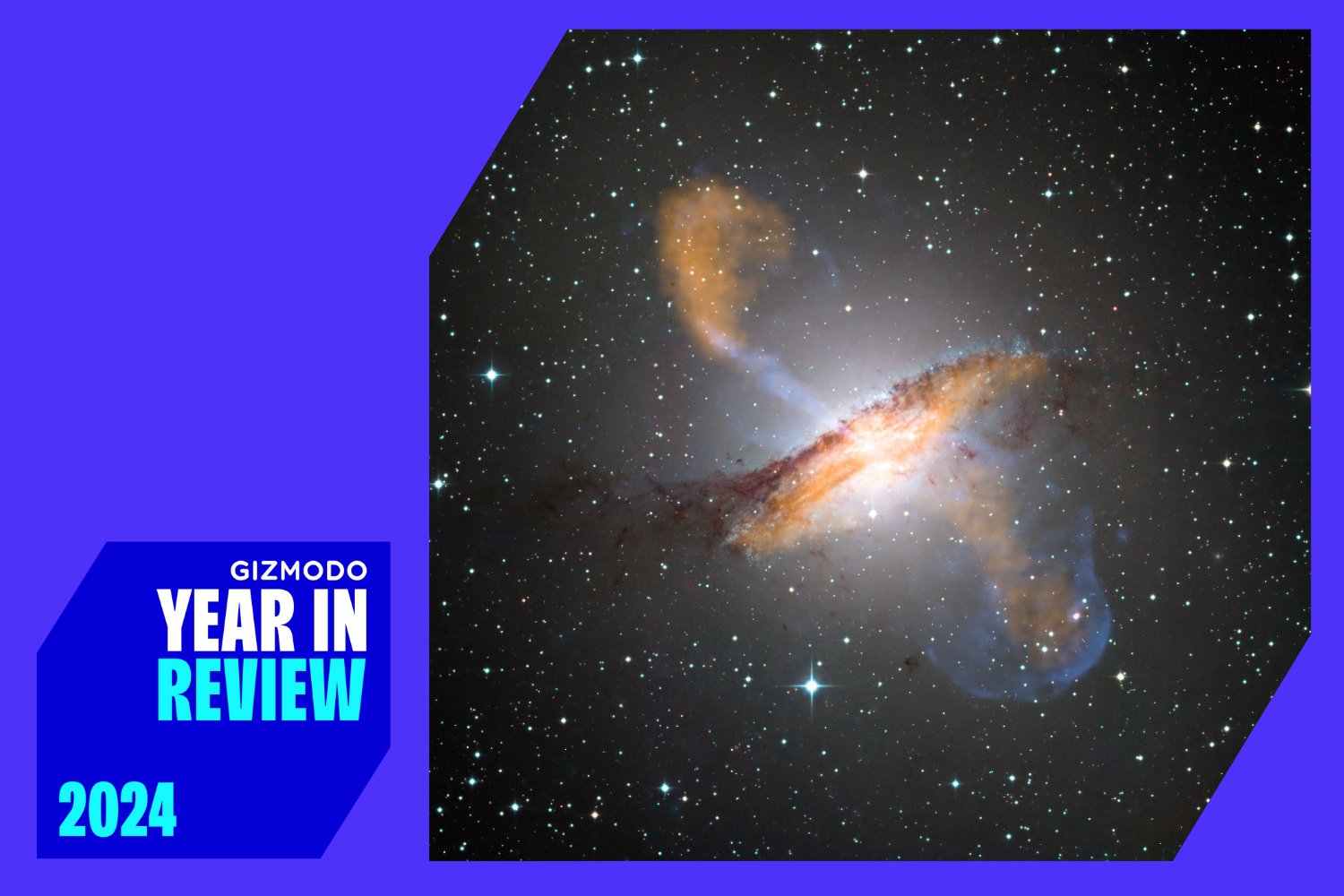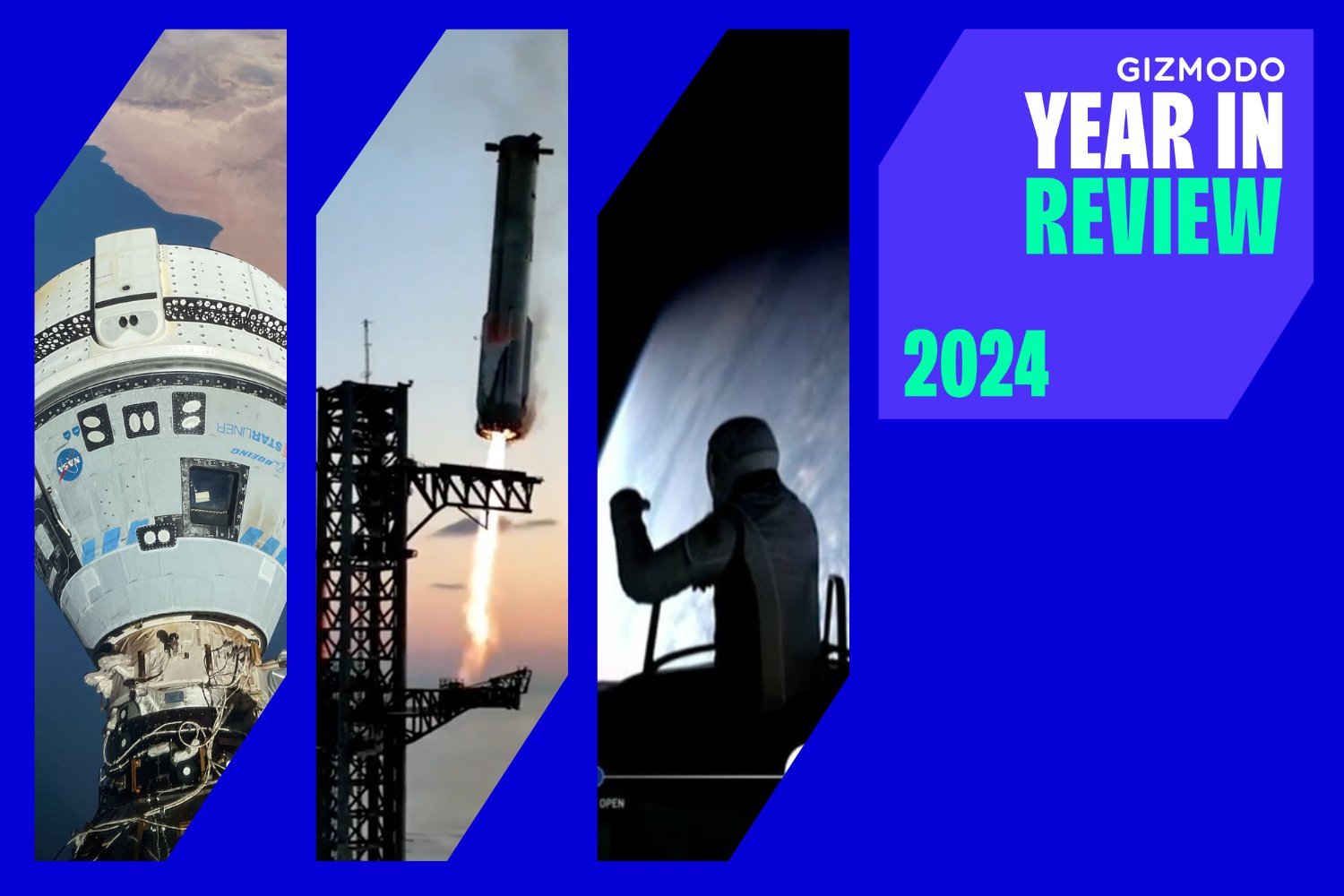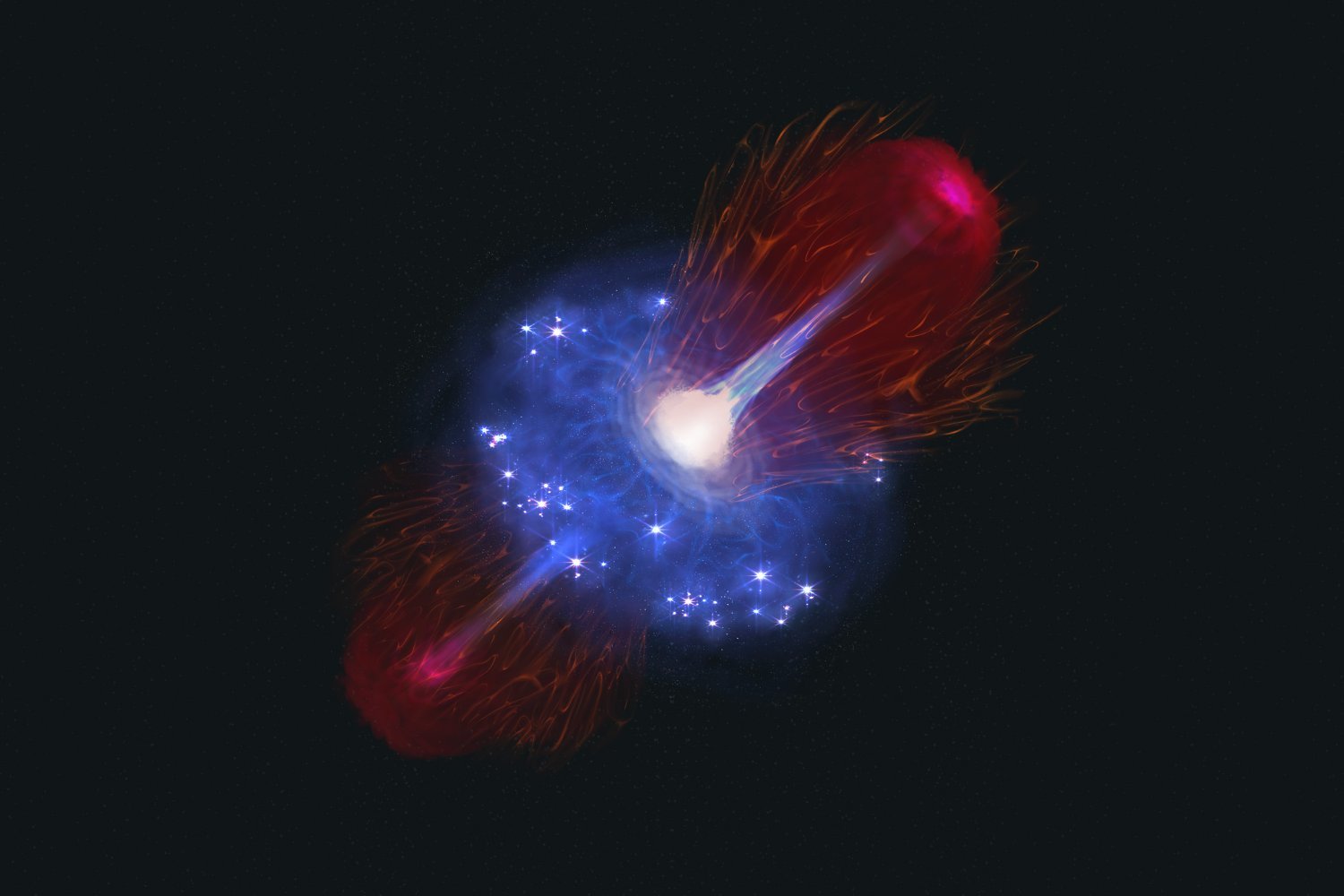A team of over 300 scientists recently observed an intense gamma-ray flare emanating from M87, a supermassive black hole millions of times larger than our Sun. This powerful eruption, the brightest seen in over a decade, originated far beyond the black hole’s event horizon—the point of no return, where even light cannot escape.
This remarkable flare, described in a study published in Astronomy & Astrophysics, emitted photons billions of times more energetic than visible light. It persisted for approximately three days and, based on the researchers’ analysis, originated from a region less than three light-days across, equivalent to roughly 15 billion miles (24 billion kilometers). The study delves into the extreme environment surrounding M87, offering valuable insights into its powerful jets and the processes driving them.
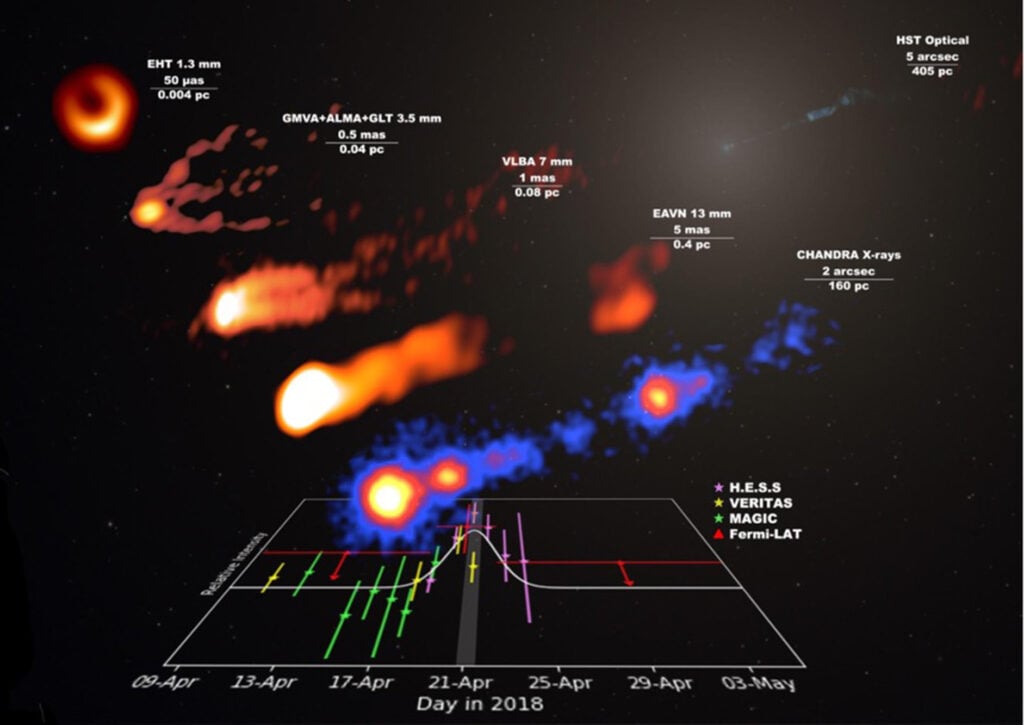 A light curve of the gamma-ray flare (bluish, at bottom), and other simulated images of the M87 jet.Gamma-ray flare light curve (blue, bottom) and simulated images of the M87 jet.
A light curve of the gamma-ray flare (bluish, at bottom), and other simulated images of the M87 jet.Gamma-ray flare light curve (blue, bottom) and simulated images of the M87 jet.
M87’s immense gravitational pull draws matter towards it, energizing surrounding particles and propelling them outwards in colossal jets. These jets, which can extend to astonishing lengths, collide with surrounding cosmic material, creating spectacular displays of energy. In a recent example, a pair of jets was observed stretching 140 times the width of our Milky Way galaxy.
“The acceleration of particles near the black hole and within the jet remains a mystery,” explains Weidong Jin, a researcher at UCLA and the study’s corresponding author. “These particles, traveling at near light speed, possess incredible energy, and understanding their acceleration mechanisms is crucial. Our research provides the most comprehensive spectral data and modeling ever compiled for M87, shedding light on these complex processes.”
Unraveling the Disk-Jet Connection
The researchers discovered a discrepancy between the position and angle of the event horizon and the location of the black hole’s jet. This suggests that interactions between particles and the event horizon influence the jet’s position. “This discovery promises to illuminate the relationship between the accretion disk and the jet, unveiling the origins and mechanisms behind gamma-ray photon emission,” notes Giacomo Principe, a researcher at the University of Trieste and a co-author of the study.
 M87 Black HoleM87 Black Hole – Artist Rendition
M87 Black HoleM87 Black Hole – Artist Rendition
Only two black holes have been directly imaged thus far, and “directly imaged” refers to capturing the black hole’s shadow against the backdrop of the bright accretion disk, as light cannot escape the event horizon. The groundbreaking first image of M87’s supermassive black hole was captured in 2019 by the Event Horizon Telescope collaboration. Subsequent observations revealed a wobbling black hole with a more diffuse ring structure than initially anticipated. In 2022, the same collaboration successfully imaged Sagittarius A*, the black hole at the center of our own Milky Way galaxy.
Future Observations and Discoveries
Future observations, using a more sensitive EHT array, will provide invaluable insights and unprecedented opportunities to study the physics surrounding M87’s supermassive black hole,” Principe adds. As imaging technology and astrophysical models continue to advance, our understanding of these distant and extreme environments will deepen. Unraveling these cosmic details could potentially lead to groundbreaking discoveries about the limits of classical physics as we know them.



